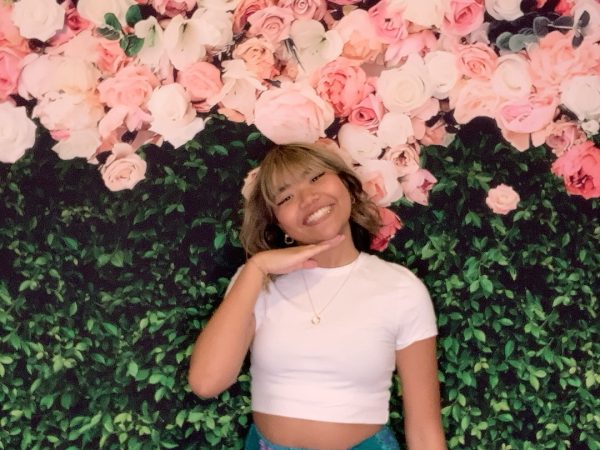Looking under the brim of millinery, study of hat design
April 27, 2016
Many of the world’s future hat designers could be starting their careers in Buffalo.
Dr. Lynn Boorady is helping them take the first steps toward their goal.
Boorady, who is the chair of SUNY Buffalo State’s fashion and textile technology department, oversees the undergraduate program that anyone eager to enter the hat business must first go through.
Millinery, or the study of hat designing, is a specialty in the fashion field. An aspiring milliner must start out with a bachelor’s degree in fashion design before he or she can go on to get a master’s degree in millinery or take an apprenticeship with a hat designer.
“The fashion industry is not so hung up on degrees as they are with experience, so if someone can get hired by a milliner and work for them a few years, then they could be hired by a major company,” Boorady explained.
Boorady’s office, on the third floor of the Technology Building, is a spacious room with a window that looks out to her secretary’s desk in front. A bookshelf beside Boorady’s own desk is packed with books on sewing and fabric design.
Hats were a must during the 1940s and 50s, but the trend has waned in contemporary fashion. Boorady doesn’t rule out a revival.
“I always say, fashion is cyclical. So, at some point, sure, it would come around, but I’m seeing different phases right now,” Boorady said. “A couple of years ago, we saw the fascinators, the little headbands with the tiny hats or flowers or things that were very popular. I’m still seeing very attractive – not as big as hats but smaller – hairpieces to decorate the hair and I think that is the trend that we’re seeing more than anything else right now. Hats still remain more functional than fashionable, though we want our functional items to be fashionable.”
Following this concept, the fashion department maintains a collection of about 15,000 items, including many hats, for fashion design majors to view.
Dr. Arlesa Shephard is an assistant professor and the department’s costume historian, who has worked under Boorady for about four years.
“Most of the hats are probably from about the 50s and 60s, but we do have some hats that are earlier from the 30s, 40s,” Shephard said. “I even have one or two hats from the 20s.”
“It’s not a fully staffed museum,” Shephard added. “Students simply have to put forth an inquiry and most likely reach out to myself or they could reach out to their instructor, and then we definitely encourage students to make appointments if they want to see some of those hats or clothing or anything for design inspiration.”
One of the more pressing issues facing hat designers is the shift in buying patterns from the weather fluctuations. A warmer winter means fewer people buying cold-weather hats, which can be “a huge disappointment” for manufacturers, Boorady said.
“The deep discounts have been great for the consumers, not so great for the manufacturers and retailers,” Boorady said, adding that the current warm weather has been an anomaly.
She referred to last year’s November snowstorm, and the increase in sales of winter items that year.
“It’s not something I’d worry about long-term or need to think that my students need to prepare for,” Boorady said, adding that “it all depends on the situation. We’ve found students are getting hired at the same rates as they have for the past few years, so we’ve been very lucky that way.”
Boorady, who grew up in Fredonia, NY, has a Ph.D in instructional technology and textile and apparel management from the University of Missouri. Prior to earning her Ph.D, she received a master’s degree from Cornell University and a bachelor’s degree from the University of Pittsburgh.
A love of apparel is nothing new to Boorady, however. She said her interest in fashion goes back to when she was a young girl.
“I started sewing my first dress in the first grade, so I’ve been interested in sewing and fashion my entire life,” she said.
So what’s Boorady’s favorite style of hat?
“My favorite style of hat?” Boorady echoed. “I love cloche hats. Close, you know, and they cover the eye a little bit. I think those are just adorable.”
email: [email protected]



